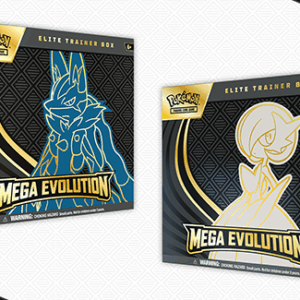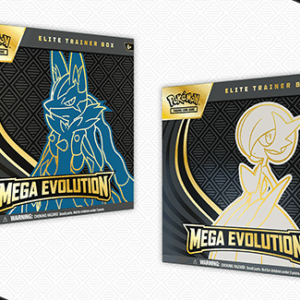In the world of Pokémon card collecting, the obsession with Base Set Pokémon cards from 1999 is anything but child’s play. Collectors, new and seasoned, continue to sift through card stacks, gripping tightly onto the nostalgic remnants of their childhood, while also eyeing potential fortunes. However, while these cardboard gems share familiar artwork and Pokémon, the differences between the waves of Base Set cards—First Edition, Shadowless, and Unlimited—can dramatically impact their market value and collectibility. Let’s delve into the nuances of “shadowless” and “shadowed” Base Set Pokémon cards to help you discern these treasures.
When one mentions the Base Set, memories flood back to three distinct card categories. There’s the First Edition, identifiable by its iconic black stamp. Next, we have the Shadowless cards. These appear akin to the First Edition in design but sans the stamp. Finally, the Unlimited cards, the most abundant during the height of Pokémania, often dubbed shadowed due to a minor design alteration involving a shadow around the card’s art window. Each variation carries distinct visual cues and implications for scarcity, ultimately influencing their respective market value.
So, what does “shadowless” mean to those not yet fluent in card collector lingo? It’s pretty simple: early Base Set cards sport a frame around the Pokémon artwork devoid of any drop shadow. The absence of this shadow gives the artwork a flat appearance, quite unlike later renditions that adopted a subtle gray shadow. This led to those later prints being called “shadowed” or, officially, Unlimited. This metamorphosis from a basic 2D art window to a somewhat more dynamic 3D art impression changes not just the look but also the feel of the card.
Understanding the timeline of these prints is crucial for any collector. The First Edition Base Set led the charge, followed closely by the Shadowless versions, which shared the same shadowless appearance, just without the accompanying First Edition stamp. Then came the enormous print run of Unlimited Shadowed cards, the sightings of which sent collectors and casual fans alike into purchasing frenzies at stores well into the latter part of ’99 and beyond.
Why does this minutiae matter to collectors? In card collecting, scarcity and print order determine worth more than aesthetic appeal, and the shadowless cards are the middle child of rarity—rarer than Unlimited but more accessible than First Edition. This positioning tends to inflate their market prices, particularly for holographic cards and highly prized commons like Charizard, Blastoise, and Venusaur when found in top condition. Grading companies will often label these cards “Shadowless,” and this single designation alone can appreciably hike their financial value.
Visual indicators provide the quickest way to ascertain whether you are holding a shadowless piece of the past. A shadowless card offers a flat, shadow-free frame and employs a thin typeface on select details. The shadowed Unlimited format incorporates a gray shadow on the right side of the art window, giving the frame a raised appearance. For the font-obsessed, shadowless cards show thinner type for the red “HP” text and tighter spacing, while shadowed cards display a bolder, slightly wider font spread.
When it comes to border tones, shadowless cards frequently present lighter yellow borders and softer ink—which is something only a seasoned eye might detect as a supporting clue. These aspects create a perfect storm of intrigue for most collectors. Evolution boxes and attack texts on shadowless cards appear finer and more delicate than the sturdier typography on their Unlimited brethren.
Even minute details like the copyright line hold clues: shadowless cards typically bear the early multi-year Nintendo, Creatures, and GAMEFREAK line, whereas Unlimited cards have slight layout modifications. It’s pertinent to consider lighting and condition though, as these can obscure such small print.
For holographic cards, shadowless foils occasionally exhibit a different sheen and print pattern—a subtle variation that becomes much more apparent when comparing the two versions side by side. If you have multiple cards to examine, laying them out together can make the differences pop.
Enthusiasts also track the boxes and packs these cards hailed from, with shadowless cards stemming from the early Base Set boxes available for a limited time. Meanwhile, Unlimited shadowed cards were printed en masse and lingered on store shelves. Boxes and packs offer another layer to this collectible puzzle for the true detective of card collecting.
Practical examples to bear in mind include the much-coveted Charizard. A First Edition Charizard is, by nature, shadowless with a stamp. Remove the stamp, and you have its rarer shadowless sibling. The shadowed Charizard is far more common, and many fondly recall owning one. Similarly, the 2-Player Starter Set Machamp is another hallmark of shadowless cards. Later versions of shadowed Machamp teach the eye the variance between these prints readily.
Trainer cards and basic Energy cards are not exempt from this shadowless-to-shadowed conversion. These are similarly free of the picture-box shadow for the shadowless prints, ensuring that even the cards trickling through in random lots possess discerning value.
Shadowless cards have a history of travelling from playground to playground, which affects their condition. Edge chipping and fragility can be more pronounced due to their lighter borders. When grading, focus on corners, holographic surfaces, and centering—staples of grading consistency. A shadowless card slabbed with its label does much of the legwork to secure a market premium after passing scrutiny.
Avoid common pitfalls by recalling that the shadowless designation applies exclusively to Base Set cards. The term does not extend to the Jungle or Fossil sets that followed. Furthermore, later Unlimited Base prints appearing widely in the UK with a “1999–2000” copyright line still use the shadowed layout, so be cautious when hunting for distinctions. Additionally, confusion around “thick” versus “thin” First Edition stamps lies outside the shadow discussion; stamp thickness pertains solely to First Edition details rather than the stamp-less shadowless category.
For a quick recall, here is your identification checklist:
– No gray bar on the right side of the art window signals a shadowless card.
– Thin red “HP” text and tight spacing also suggest shadowless.
– Lighter border tones and finer typeset fortify this claim.
– Ensure it’s from the Base Set era, as shadowless is exclusive to these cards.
– Compare any holographic cards with known Unlimited prints for clarity.
The hierarchy of card value pegs First Edition Base at the top, followed by a strong-performing shadowless Base, particularly for premium cards, and then the largely common Unlimited Base. For those excavating childhood collections, anything minus the shadow alone could be a shadowless gem. Your collection can start organizing itself just by catching that first flat-frame sighting—a journey promising both a nostalgic joyride and a potential financial boon.






